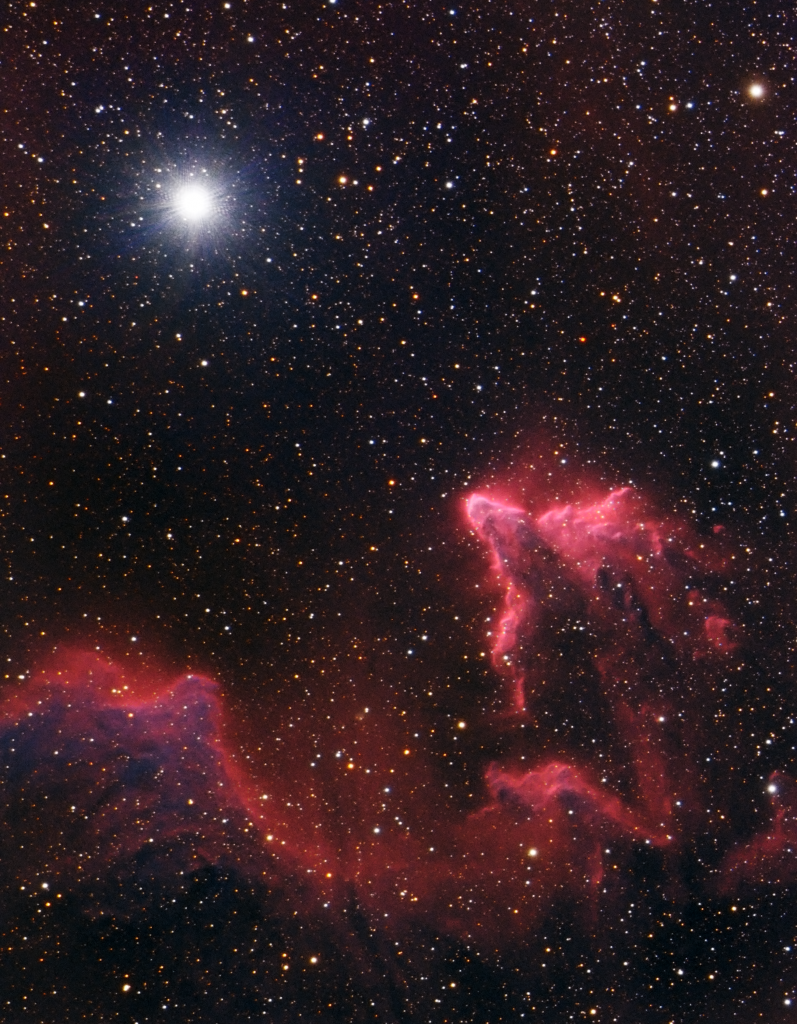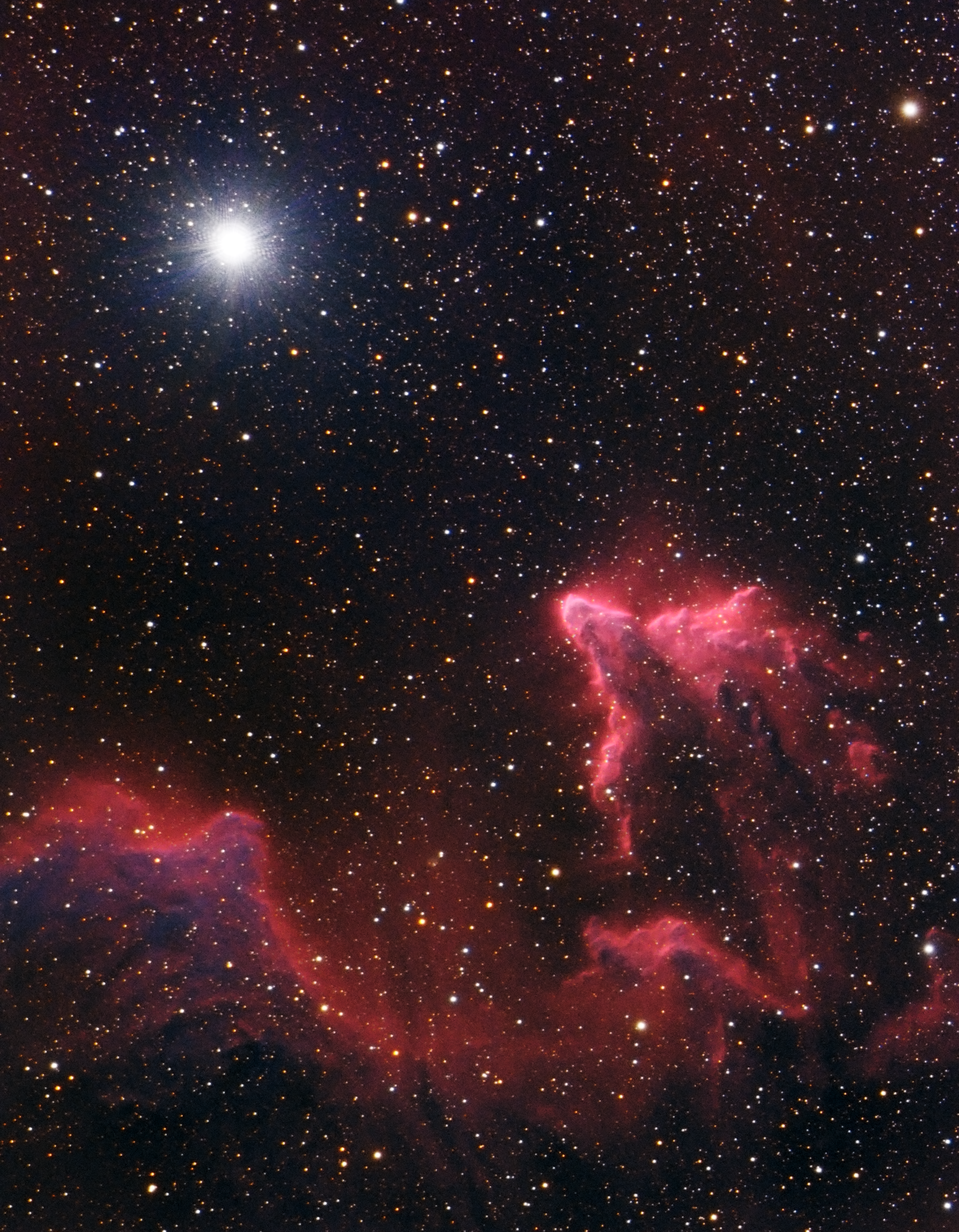
Similar Posts
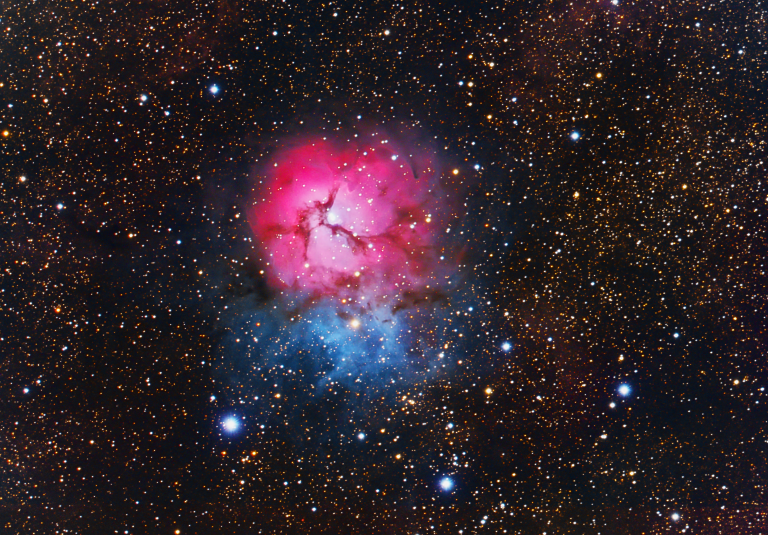
The Trifid Nebula (M20)
Our new observatory is starting to prove its worth… the Trifid Nebula is an object I’ve always wanted to capture, but in our previous location it was too low in the sky and was always obstructed by trees. Further complicating matters, it is a summertime object, and here in Florida summertime is the worst time…
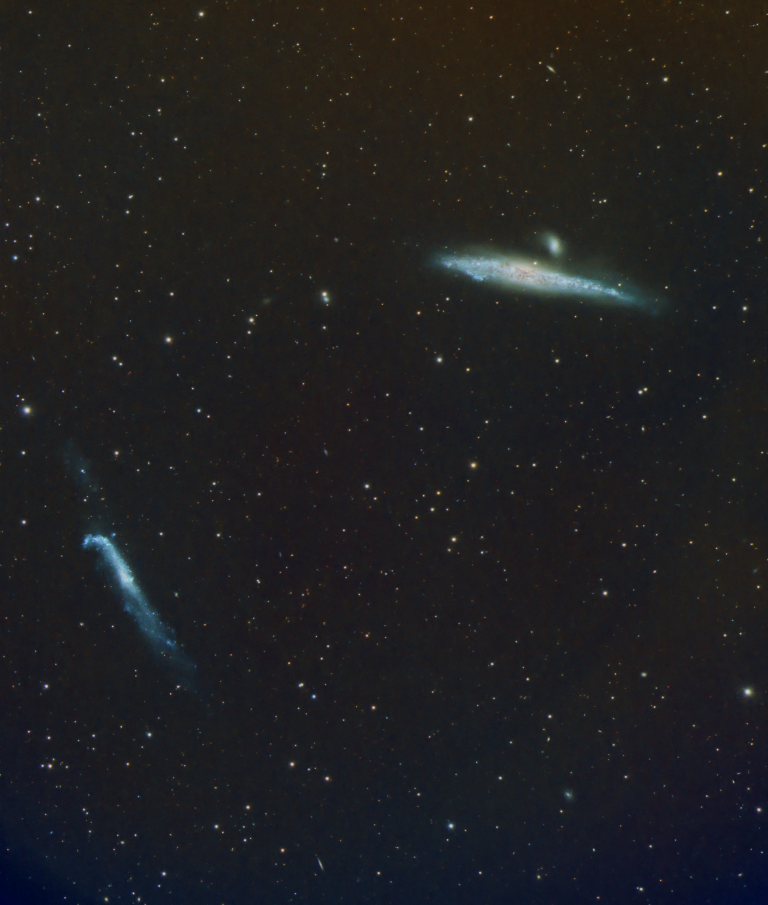
The Whale and the Hockey Stick
This pair of galaxies gets its name from their shapes. Both are viewed edge-on, and from this perspective we can see how a past interaction between the two warped them both. About 6 hours of exposure time from the backyard observatory.
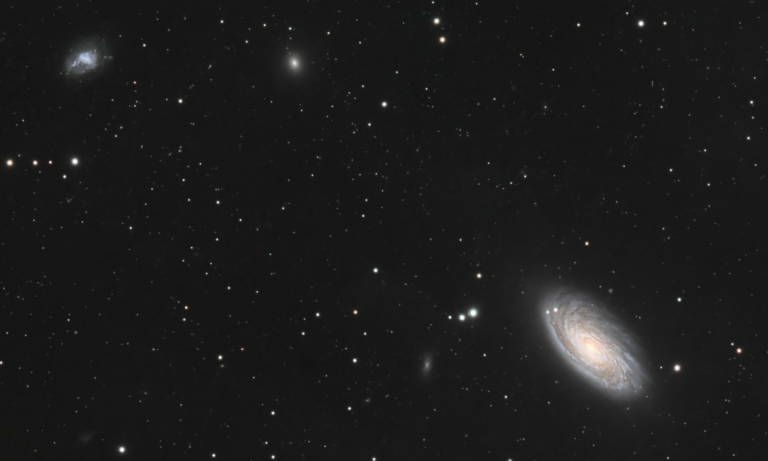
The galaxy M88 and friends
Messier 88, within the constellation Coma Berenices, is part of the nearby Virgo cluster of galaxies. And by “nearby”, I mean 50-60 million light years away! The light we’re seeing from this galaxy originated from the time of the dinosaurs. Telescopes are really time machines. There are many other galaxies surrounding M88, both smaller and…
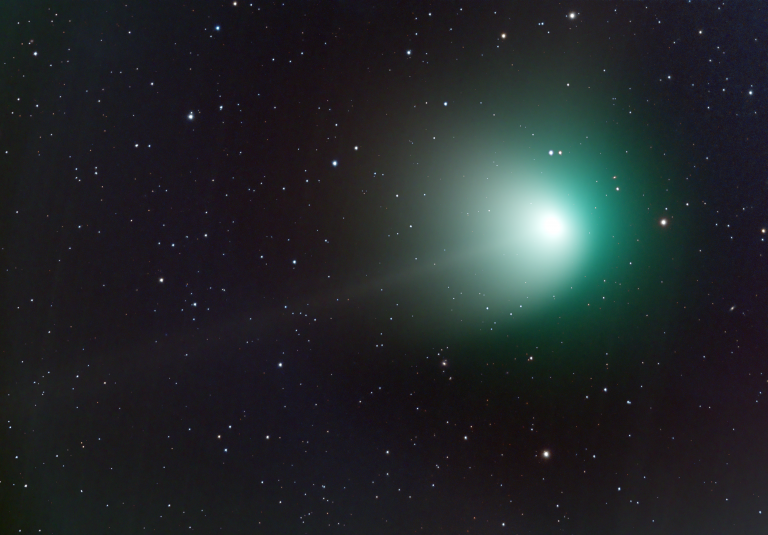
Another look at the “green comet”
I don’t know why the press has latched onto the name “the green comet” for C/2022 E3 (ZTF) – most comets are green, and it’s too dim to see any color at all if you’re viewing it through binoculars or a telescope. But through 2 hours of total exposure time, the colors do emerge, and…
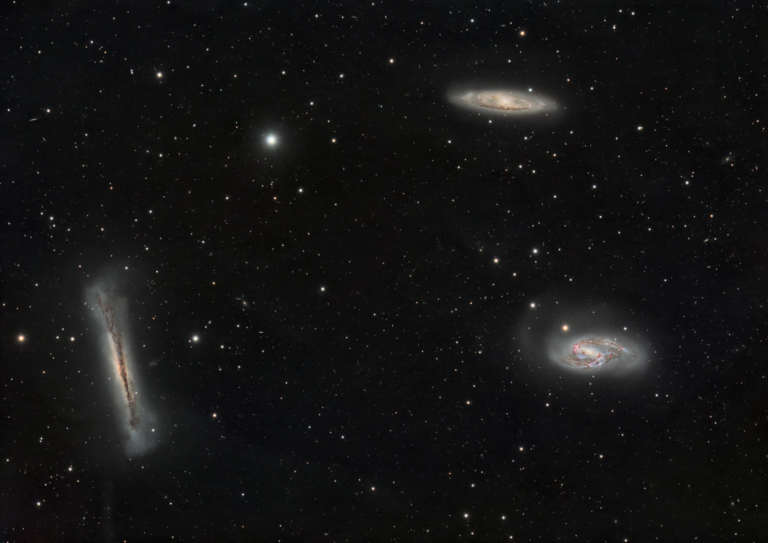
The Leo Trio (again)
It’s been awhile since I imaged the “Leo Trio” (aka Leo Triplet) of galaxies: M65, M66, and NGC 3628. I wanted to see if my latest equipment, software, and somewhat darker skies made a difference. I’d say so… this is a total of 25 hours of exposure time, including some Hydrogen-alpha filter data to pull…
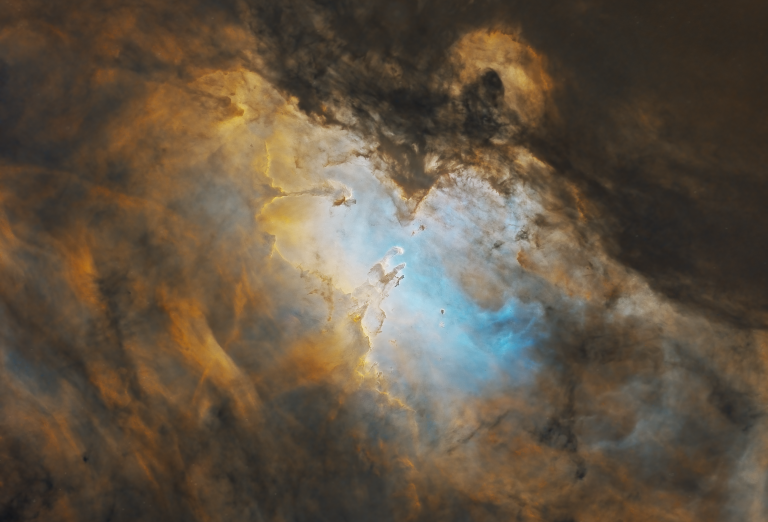
The Eagle Nebula – sans stars
This image was something of a happy accident – I spent a night capturing narrowband data on M16, the Eagle Nebula (home of the famous “pillars of creation”.) Of course I had to try reproducing the iconic Hubble image as best I could, but the color palette they use results in big, ugly, magenta-colored stars….

